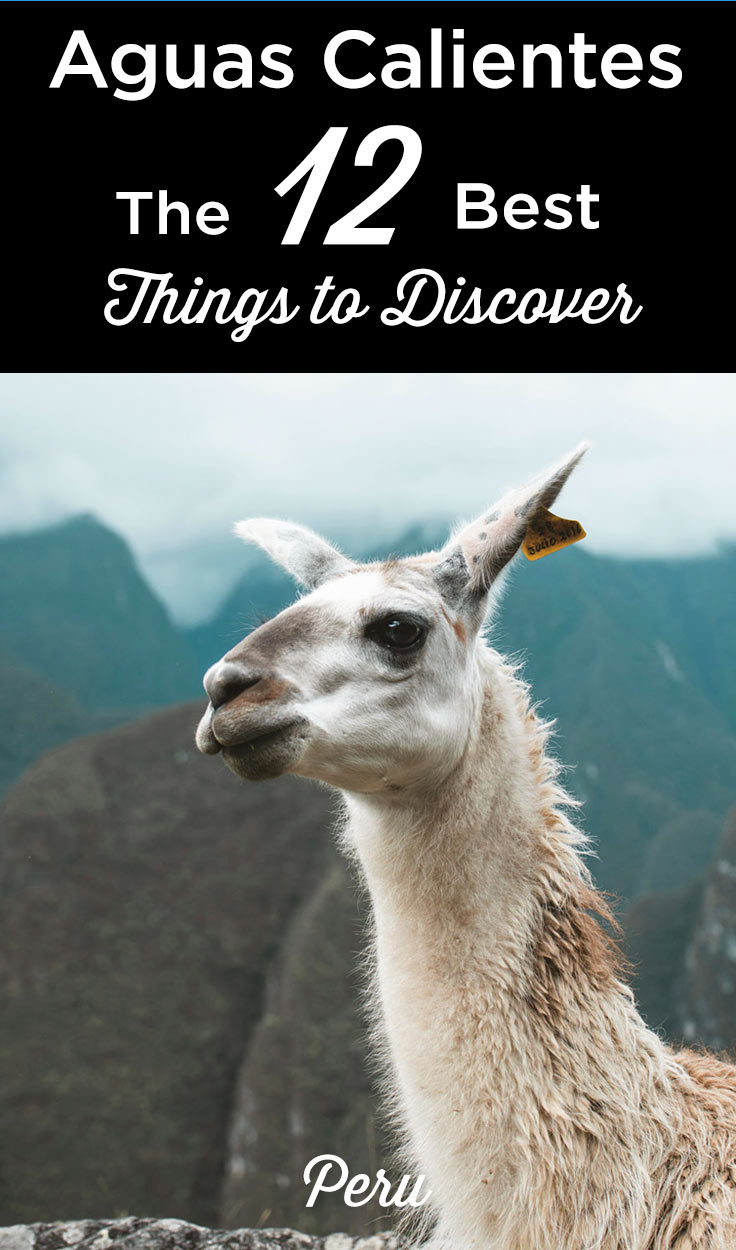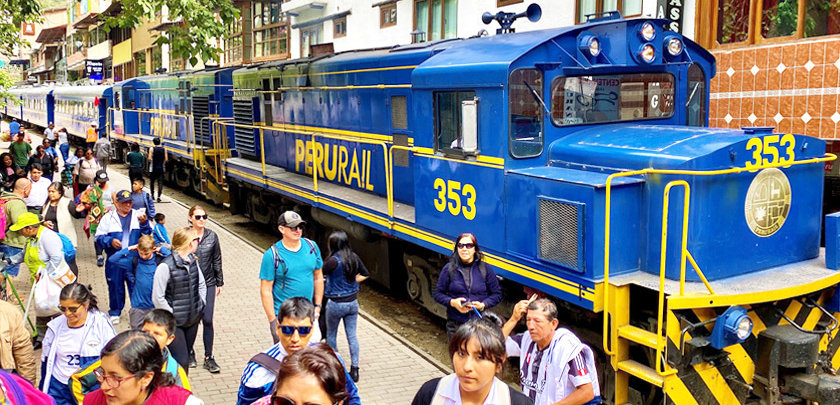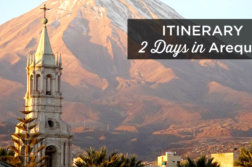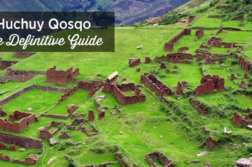How to Visit Aguas Calientes (Machu Picchu Pueblo): Tips, Hotels, and What to Do
Aguas Calientes—also called Machu Picchu Pueblo—is the gateway to Machu Picchu, whether you arrive by train or on foot.
Just don’t expect a charming Andean village. This is a place built entirely around tourism: full of restaurants and hotels, though the quality-to-price ratio isn’t always ideal.
It can feel overwhelming at first glance, but the journey to get here is stunning—and once you arrive, the mountains that wrap around the town are absolutely breathtaking.
To help you make the most of your stay in Aguas Calientes, I’ve put together a guide with the top things to do—including a few hidden gems—along with my favorite restaurant picks and hotel recommendations for every budget.
So, what to do in Aguas Calientes, where to stay, and how to enjoy it all? Let’s go!
Sommaire
- How to Visit Aguas Calientes (Machu Picchu Pueblo): Tips, Hotels, and What to Do
- What to do in and around Aguas Calientes
- 1. Relaxing in the hot springs
- 2. In the footsteps of Hiram Bingham
- 3. Discover Machu Picchu’s hidden museum
- 4. Marveling in front of a multitude of butterflies
- 5. Bathing in a waterfall surrounded by nature
- 6. See Machu Picchu for free
- 7. Climbing Huayna Picchu
- 8. Machu Picchu mountain, an alternative to Huayna Picchu
- 9. Visiting Machu Picchu
- 10. Buy souvenirs
- 11. Walking through the streets of Aguas Calientes
- Where to eat in Aguas Calientes
- How to get to Aguas Calientes?
- Can I feel altitude sickness in Aguas Calientes?
- Book Your Flight at the Best Price
- Rent a Car in Peru
- Traveling to Peru? These articles will help you!
What to do in and around Aguas Calientes
1. Relaxing in the hot springs
The town of Aguas Calientes justly gets its name from its hot springs.
A complex of 5 pools of sulfurous water (many think the water is dirty because of its yellowish color, but it is the sulfur that gives them their peculiar hue) with a temperature ranging from 96.8˚F to 114.8˚F.
The waters are natural and come directly from various volcanic springs and possess numerous therapeutic properties.
It is the perfect place to relax after a visit to Machu Picchu while waiting for the return train.
Important: in the place you will find lockers and showers to wash yourself before entering the bathrooms, but don’t forget your sandals, towels and bath robe, because you will not find any there.
Visit the hot springs of Aguas Calientes:
- Price: 20 soles
- Schedule: 5 – 20 hours
- Address: Av. Pachacutec

2. In the footsteps of Hiram Bingham
Walking for about 50 minutes through the rainforest, following the train tracks to Santa Teresa, we will arrive to a magnificent green oasis called Jardines de Mandor, where it is said that Hiram Bingham may have started his expedition.
This natural reserve is a true paradise for strolling and admiring the wild flora and fauna, which will also amaze you with its imposing waterfall.
It is also a great place for bird watching, where you will find numerous orchids and hummingbirds, as well as the famous Andean cock of the rock the national bird of Peru (also called Tunqui).
If you like bird watching, you should know that the best time to do it is the dry season from April to October.
Definitely a must of Aguas Calientes for all nature lovers and therefore little known by tourists: so much better!
Check out this Video about Mandor’s Gardens.
Okay, maybe I stretched it a bit when I said the Manuel Chávez Ballón Museum is “hidden”—but for being the official Machu Picchu museum, it’s surprisingly unknown.
The museum features two main exhibitions and a lovely botanical garden:
- An exhibit showcasing Inca relics found in and around Machu Picchu: about 250 pieces including ceramics, bronze and copper tools, bones, and various everyday objects used in the citadel.
- A section dedicated to Inca construction techniques, offering insight into how Machu Picchu was actually built.
Outside, there’s a botanical garden with over 200 orchid species, most of which are endemic to the region.
It’s definitely worth a visit—especially if you didn’t hire a guide for Machu Picchu. The museum fills in a lot of fascinating details.
Visit the Machu Picchu Museum:
- To get there you have to take Avenida Hermanos Ayar, from the Hiram Bingham road (about 30 min walk)
- Open from 9:00 am to 4:30 pm
- Entrance fee: 22 soles
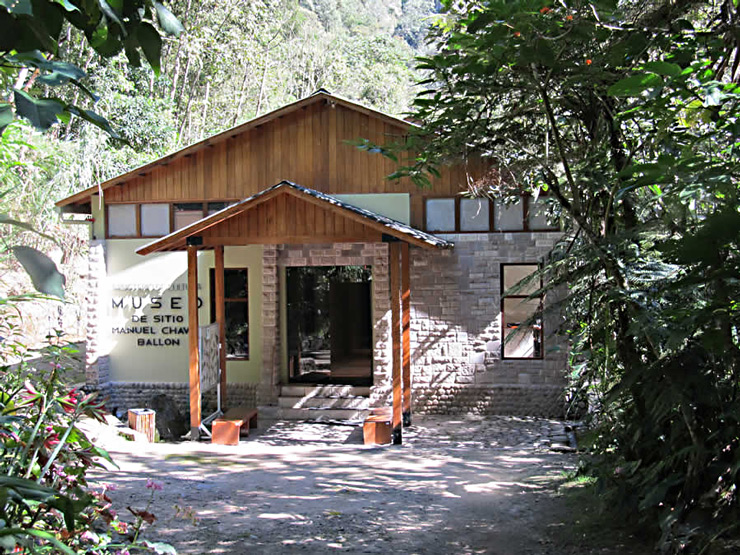
4. Marveling in front of a multitude of butterflies
A 25 minute walk from Aguas Calientes, taking the bus road to Machu Picchu, you will find a Butterfly Farm that houses an interesting collection of live butterflies as well as the different stages of development of these cute bugs.
The site is run by volunteers and aims to protect the 300 species of butterflies found in the surrounding area.
Visit the Butterfly Farm of Aguas Calientes
- To get to the Mariposario it is necessary to walk to the municipal camp before the “Puente Ruinasa” in the direction of Machu Picchu
- Mariposario´s Facebook
- Entrance fee 10 soles
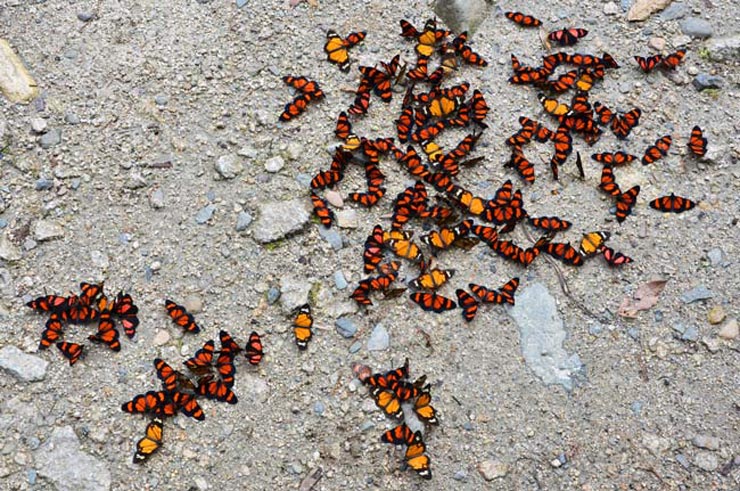
5. Bathing in a waterfall surrounded by nature
There’s a little hidden gem that almost no one talks about, and it’s surprisingly easy to get to: the Allcamayo Waterfalls. I know—it sounds almost too good to be true in a place as crowded as Aguas Calientes, but trust me, it’s real.
The trail takes you through a peaceful path surrounded by trees, orchids, butterflies, and birds, until you reach a series of three waterfalls. The last one, Allcamayo, is the tallest—about 98 feet—and absolutely stunning.
It’s the kind of place that invites you to slow down, breathe deep, and enjoy nature in its purest form. And if you feel like taking a dip? Don’t forget your swimsuit and a towel.
Visit the Allcamayo waterfalls:
- To get there, you have to take the road behind the train station and walk for about 40 minutes. You will have to climb a wooden staircase, following the road for a few minutes until you reach a hut that says “Allcamayo Waterfall”, where you will have to pay the entrance fee of 20 soles.
- Open from 8 – 17 hours

6. See Machu Picchu for free
Access to Machu Picchu is very controlled, so it is not possible to visit it for free, but it is possible to have a good look at the beautiful landscape of the citadel from Putucusi.
Phutuq K’usi, Quechua for “joyful mountain”, also known as the guardian of Machu Picchu, is the only free mountain in Machu Picchu that is part of the historic sanctuary of Machu Picchu.
As its access is free, it is not exactly well preserved. Before starting the ascent, it is necessary to be well informed about the state of the trails in Aguas Calientes.
The climb is very steep and in several sections it is necessary to use vertical ladders and chains to advance. Some of these structures are not in good condition, which increases the risk.
In recent years, several tourists had to be rescued when they were unable to descend from a height of approximately 100 foot.
If you decide to try it, it is essential to be in good physical condition, have experience in demanding hikes and do it with great caution and, if possible, accompanied.
- Important: The rainy season is dangerous and under no circumstances should the ascent be attempted under these conditions.
- Read also: My Complete Article about Putucusi
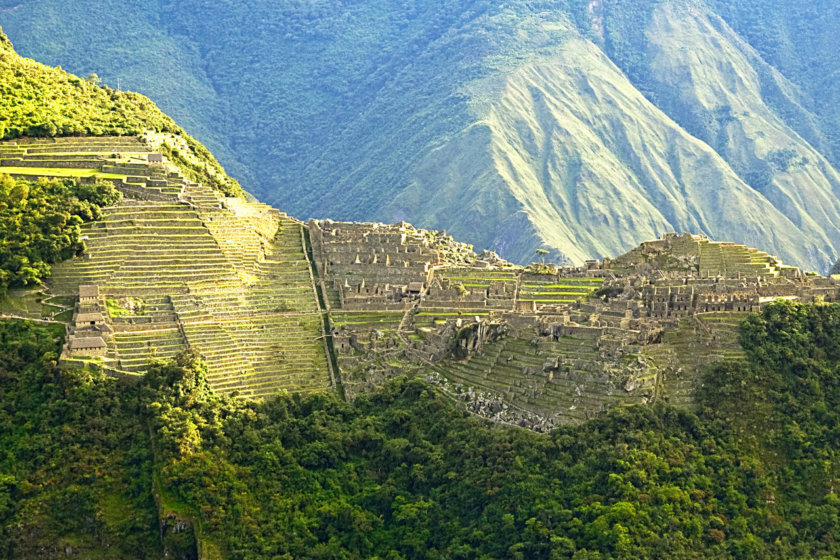
7. Climbing Huayna Picchu
Huayna Picchu, “young mountain” in Quechua, is the famous mountain behind the citadel that can be seen in all the typical photos of Machu Picchu.
The ascent is quite short (1.30 – 2 hours round trip), but very steep and allows for a magnificent view of the site and surroundings.
A truly unique experience, which is what makes it so popular. Its access is quite restricted and takes several months in advance to get a ticket.
- Read more: Huayna Picchu or Machu Picchu Mountain- Which one to choose?
It is possible to buy the huayna Picchu ticket online on the site of Machu Picchu or directly here:
Machu Picchu + Huayna Picchu Ticket
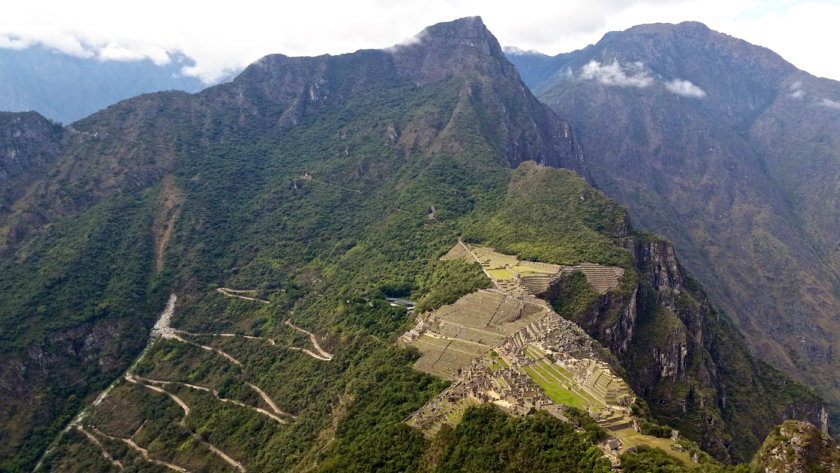
8. Machu Picchu mountain, an alternative to Huayna Picchu
If you don’t find available places for Huayna Picchu (which happens frequently), or if you just want to do a slightly less crowded hike, the Machu Picchu Mountain is an excellent alternative for you.
This is the mountain located on the other side of the citadel, in front of Wayna Picchuand its ascent is a little longer (2 to 3 hours round trip), but less demanding.
- Read also: Huayna Picchu or Machu Picchu Mountain- Which one to choose?
But beware, although it is less popular than Huayna Picchu you will also need to book at least several weeks in advance. The ticket for the Machu Picchu Mountain is purchased on the Machu Picchu´s site or directly here:
Machu Picchu + Machu Picchu Mountain Ticket
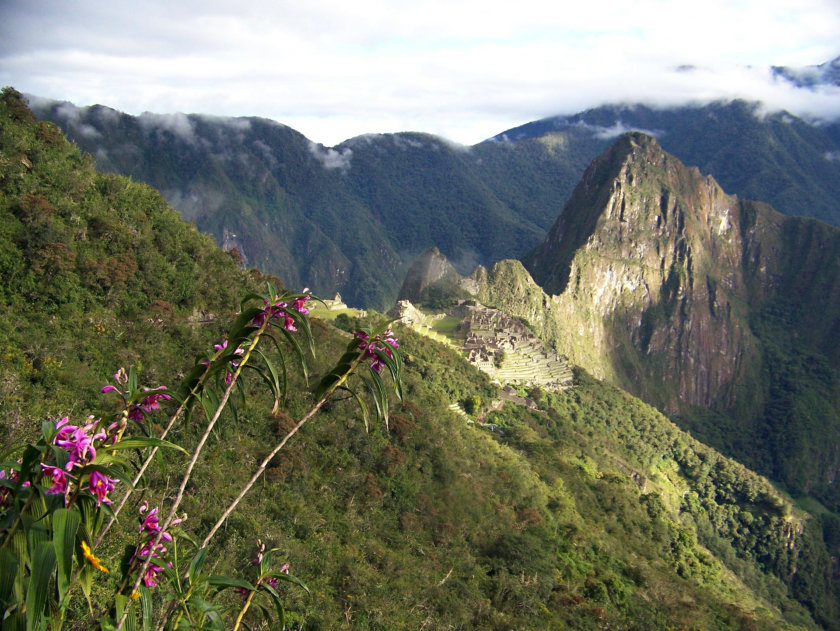
9. Visiting Machu Picchu
Hidden deep in the towering green peaks of the Urubamba Valley lies the iconic citadel of Machu Picchu. Once the seat of important religious and administrative functions—and home to the palace of Inca Pachacutec—its location suggests it held vital strategic importance during the Inca Empire.
Because it was so well concealed in the mountains, the Spanish—who had already taken Cusco and other key points in the Sacred Valley—never discovered it.
The site remained unknown to the world until 1911, when Hiram Bingham led an expedition that brought Machu Picchu into the spotlight. Today, it stands as one of Peru’s greatest symbols.
Of course, it’s now a world-famous destination and tickets sell out fast—so I strongly advise against leaving your booking for the last minute.
As mentioned earlier, buying your ticket in advance is essential, especially if you want to climb Huayna Picchu or the Machu Picchu Mountain. It is very important to book tickets to Machu Picchu in advance:
- Ticket to Machu Picchu
- Ticket for Machu Picchu + Wayna Picchu (book it several months in advance)
- Ticket for Machu Picchu + Machu Picchu Picchu mountain
To choose, I invite you to read: Huayna Picchu and Machu Picchu Mountain: Which are the differences?
How to get to Machu Picchu from Aguas Calientes?
- Walking: 2 hours of continuous climb. It is very well signposted, but the road is not particularly interesting, but, above all, it is quite dusty due to all the buses passing by. The bus is definitely the best option (unless your budget is really tight).
- By bus: the first departure is at 5.30 am and the last one at 3.30 pm. The last bus leaves at 5.30 p.m. Departures every 10 min. You can buy your bus tickets here:
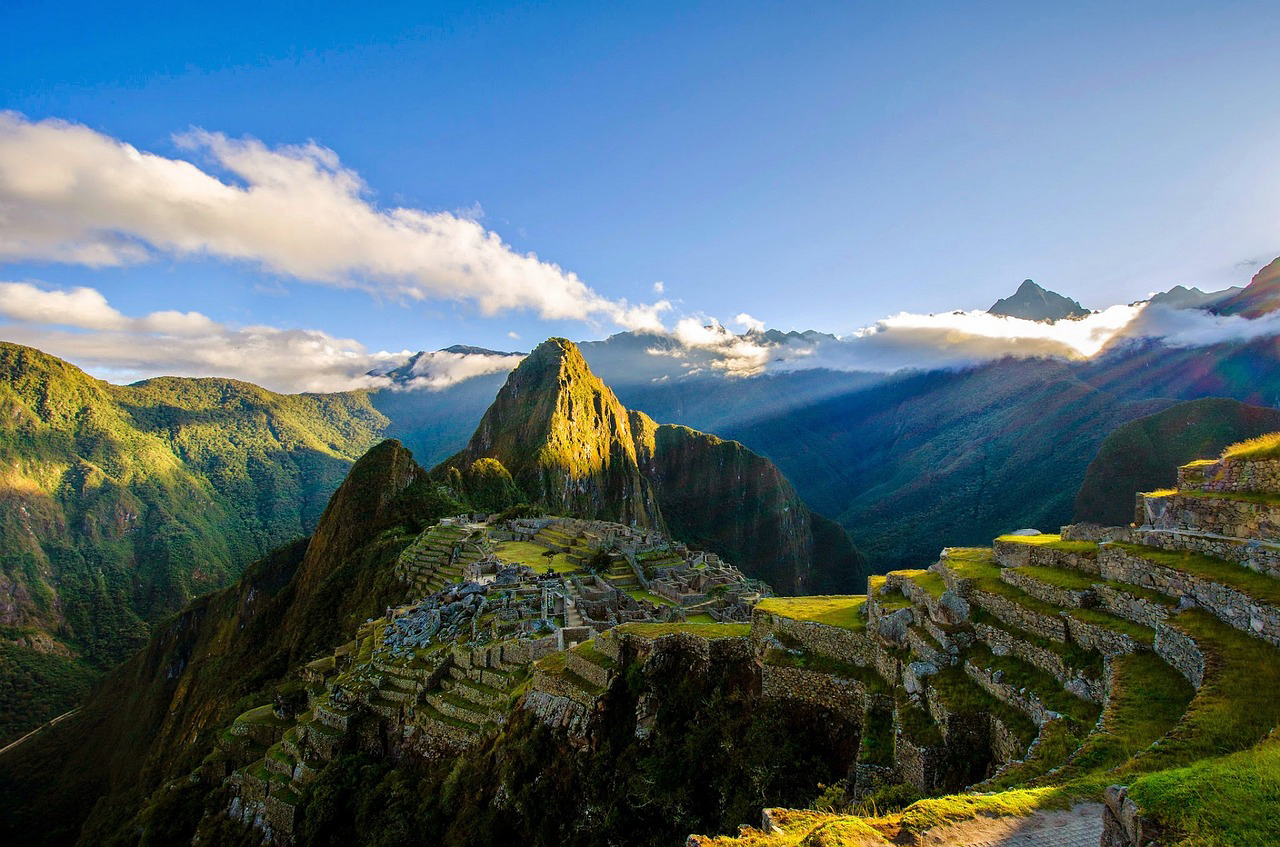
10. Buy souvenirs
Of course, there is no shortage of souvenirs in the most touristy town in Peru. Head to the handicrafts market. It will be practically impossible for you to miss it, as it is located right next to the train station.
In the market you will find more than 200 kiosks with objects of all kinds: ponchos, key rings, sculptures, instruments, paintings, etc. In short, this is the place to buy Machu Picchu souvenirs. Or… maybe not.
To be honest, the products that are sold at Aguas Calientes are generally more expensive than in other places.
Unless this is the end of your trip to Peru I recommend you to be patient and buy the souvenirs in Cusco, the Sacred Valley or in any other place.
- The handicrafts market is open daily from 8:00 am to 9:00 pm.
11. Walking through the streets of Aguas Calientes
Aguas Calientes is a small (very) touristic town that thrives because of Machu Picchu. There is a reason why its called Machu Picchu Pueblo.
For this reason, there is not so much to see, because everything is more or less made to be just a practical stop for travelers who, in addition, do not usually spend much time in the village (one night at most).
Even so, if you have a little time before or after visiting Machu Picchu there are a few things you can do on your way through Aguas Calientes:
See the small church of the virgin of Carmen, visit the main square Manco Capac and pass by the Mercado de Abastos, even if you are not going to eat there, it is a really local and pleasant experience.
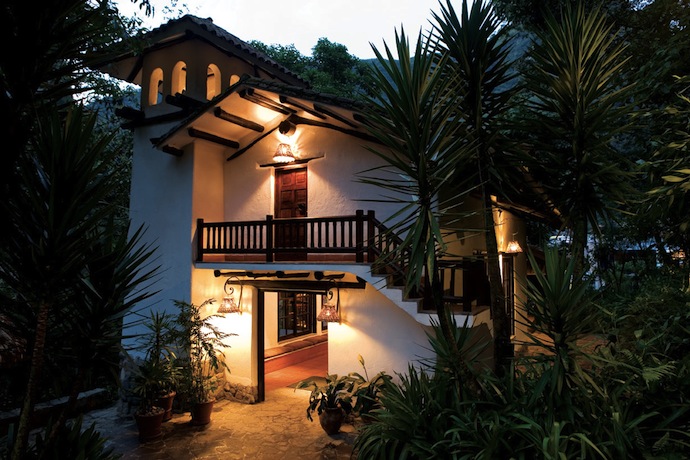
Where to eat in Aguas Calientes
Although in Aguas Calientes restaurants abound, unfortunately, the town is known for its bland and expensive offerings, but here are some redeemable options.
- El Indio Feliz: recommended in all the guide books, it is a nice restaurant with a French owner and therefore offers a menu of French and Peruvian food (trout, homemade pastas, etc.) A main dish costs between 36 and 49 soles. Address. Lloque Yupanqui 103, Aguas Calientes.
- Tree House: For some years now, new interesting proposals have been appearing and Tree House is a good example. Inside its wooden interior, it offers Peruvian fusion cuisine (try the sweet potato ravioli), however, a slightly higher budget is required (between 37 and 60 soles for a main dish). Address: 105 Huanacaure Street, Aguas Calientes.
- La Boulangerie de Paris: has become one of the favorite destinations for travelers, offering puff pastries, cakes, sandwiches, quiches and a delicious hot chocolate, how can we resist! The prices are a little high, but it is worth it. Address: Jr Sinchi Roca, Aguas Calientes.
- Café Inkaterra: for a high-end experience , you can go to this Café located in the Inkaterra Machu Picchu Pueblo Hotel. It is a nice intimate restaurant surrounded by lush vegetation, with a great view of the Vilcanota River. You can reserve your meal at Café Inkaterra here (starter, main course and dessert).
- Local market if you want to eat cheap, nothing beats the prices at the local market in Aguas Calientes with dishes from 10 to 15 soles. You will also find fresh juices for 5 soles (2 big glasses). It is not the handicraft market! You have to ask for the food market and go up to the second floor where you will find prepared dishes.
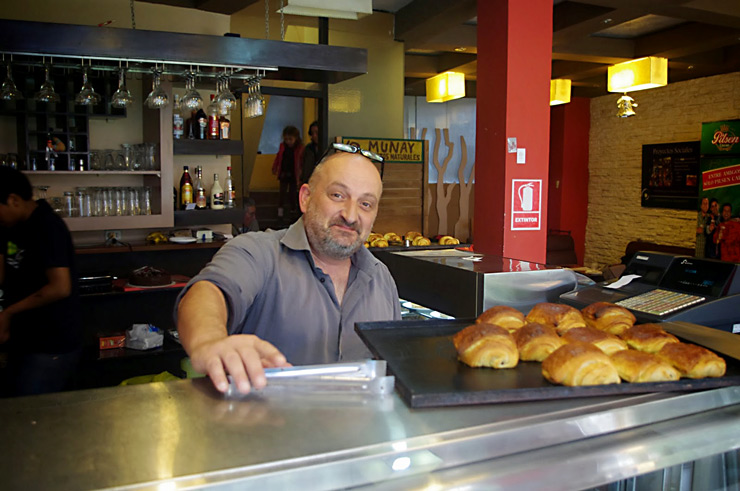
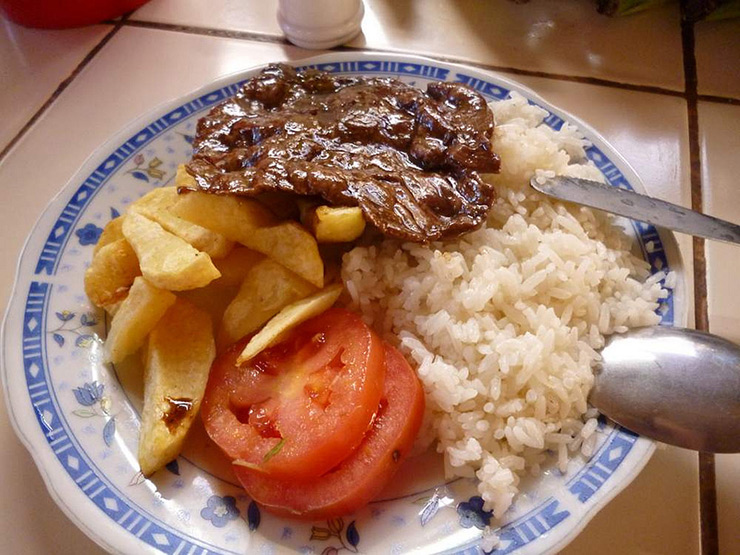
How to get to Aguas Calientes?
There are several ways to get to Aguas Calientes, from Cusco or Ollantaytambo:
1. By train
This is the fastest (3h from Cusco or 1h30 from Ollantaytambo) and most comfortable way to get there.
To make sure you get the seats on the train that suits you best (according to the time of entry of your tickets to Machu Picchu), I urge you to book in advance.
You can buy your train tickets from Cusco or Ollantaytambo here:
2. By bus and walking
Take a colectivo to Hidroeléctrica (7h- 70 soles) and then walk to Aguas Calientes (2h30-3h) following the train tracks.
It is best to buy the round trip ticket with the same transport (the return is around 2:00 pm).
3. By trekking
You can also trek to Machu Picchu . Book your trek here:
- Inca Trail (4 days) – must be booked several months in advance!
- Inca Trail short version (2 days)
- Salkantay Trek (5 days)
- Inca Jungle Trek (4 days) – perfect if you like the adrenaline rush
- Lares Trek (4 days)
Can I feel altitude sickness in Aguas Calientes?
No! Aguas Calientes is only 6,690 foot above sea level and normally the effects of altitude can be felt from 7,545 foot above sea level.
By way of comparison, Machu Picchu rises to 7,970 foot, Huayna Picchu, 8,835 foot and Cusco, 11,150 foot.
In any case, in high places, you should walk more calmly than usual to avoid suffocating quickly.
Book Your Flight at the Best Price
Planning a trip to Peru? To get the best deal on your flights, I recommend using this flight comparison tool, in partnership with Skyscanner.
It’s the easiest way to find the lowest prices for both international flights and domestic flights within Peru—ensuring you pay the best rate with no hassle!
Rent a Car in Peru
Renting a car is one of the best ways to explore Peru at your own pace and make the most of your trip!
Personally, I always use Booking.com Cars for a few key reasons:
- Easily compare prices from all major rental agencies in one place—finding the best deal has never been easier!
- Free cancellation on most bookings, so you can reserve with peace of mind.
- Better insurance coverage at a lower price than rental companies—saving you money with no extra effort.
Click the button below to find the best car rental deals in Peru:
Rent a car
Book entrance tickets and guided visits
Take a travel insurance
Book a tour
✈️ Book your flight
Traveling to Peru? These articles will help you!
Discover all my articles about Peru: All my tips and itineraries to plan your trip in one place!
40 EPIC Things to Do in Peru (+ My Best Tips)
- Machu Picchu: Tickets, Circuits, and Top Tips to Plan Your Visit
- Huayna Picchu vs. Machu Picchu Mountain: Which Hike is Best?
- Inca Trail: The Definitive Guide to the Classic Trek to Machu Picchu
- Salkantay Trek: A Complete Guide to the Best Inca Trail Alternative
- Inca Jungle Trail (Machu Picchu): What to Expect + My Experience
- Huchuy Qosqo Trek: The Definitive Guide + Tips
- 30 Epic things to do in Cusco (+Tips)
- One day in Cusco: The Perfect Itinerary (1st time visit)
- 2 or 3 Days in Cusco: The Perfect Itinerary for First-Time Visitors
- 19 Free Things to Do in Cusco + My Best Tips
- How to Get to Cusco: Best Transport Options Compared
- Cusco Tourist Ticket Guide: Prices, Sites, and How It Works
- Sacred Valley: 23 Best Places to Visit (+Where to Stay)
- Ollantaytambo: 15 Epic Things to Do in the Heart of the Sacred Valley
- Pisac: The 12 Best Places to Visit (+ Tips)
- Maras and Moray: How to Get There, Entrance Fees, and Tips
- Urubamba: The Best 10 Places to Visit
- Laguna Humantay (Cusco): How to Get There, What to Expect, and Tips
- How to Visit Rainbow Mountain from Cusco: Hike, Tours & Tips
- Choquequirao Trek: Complete Guide to the Lost Inca City of Peru
- Itinerary: 5-6 days in Peru – Lima, Arequipa, Colca Canyon, Cusco, Sacred Valley and Machu Picchu
- Itinerary: 7-8 days in Peru – See the maximum in one week
- Itinerary: 10 days in Peru – The ideal itinerary for a short stay in Peru
- Itinerary: 2 weeks in Peru – The classic route
- Itinerary: 15 days in Peru – An itinerary that includes northern Peru
- Itinerary: 3 weeks in Peru
- Itinerary: 3 weeks in Peru + Bolivia – The best itinerary for visiting both countries
- Itinerary: 1 month in Peru – What to see and do in 30-31 days
You’re using Pinterest? Here is the picture to pin!
